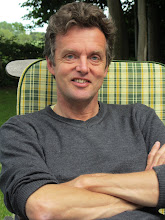ENERGY INDEPENDENCE
One of the reasons why it has been so difficult to impose sanctions on Russia with respect to the Crimea issue is that Russia holds a major trump card; roughly a quarter of all the gas used in Europe comes from Russia, and in some E.U. countries such as the Baltic states, it is close to 100%. If I were President Putin, I would quietly watch what happens for the rest of 2014, and if things haven't changed the way I want by the time winter sets in, turn off the taps.
Russia has this card because Europe has seen Russian energy as a way of diversifying away from even more unsavoury regimes in the Middle East and elsewhere. Back in 1974, after the 1973 oil crisis, Europe's leaders vowed to reduce within 10 years the continent's dependence on imported energy from the then 63% to within 40% and 50%. Today, the figure is still about 63%, despite the whole North Sea story.
And therein lies a lesson for Denmark, a country both far away from Russia and one of the main beneficiaries of that North Sea story. Since 1996, Denmark has been self-sufficient in energy. But those days are now over; a marked fall of 17.7% in production in the North Sea last year pushed the self-sufficiency percentage down to 93%, a figure which will continue to fall in the future. From now on, Denmark will be much like any other European country.
True, Denmark has an ambitious renewables policy, which is designed to produce 50% of electricity by 2020. However, renewable energy is still very expensive, and additional burdens are the last thing the Danish high-cost economy needs.
It is also true that shutting off the gas taps would hurt Russia. But I suspect that President Putin would be able to handle his disaffected voters better than Denmark's Prime Minister would be able to handle her disaffected voters. European leaders are learning that playing hardball with the big boys will involve hard choices.
Walter Blotscher
Friday, 21 March 2014
Subscribe to:
Post Comments (Atom)

No comments:
Post a Comment